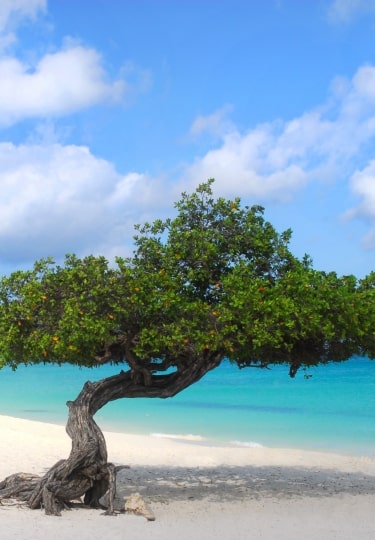One of the Caribbean’s crown jewels, thanks to a tranquil and picturesque location in the Lesser Antilles, Aruba is known for soft white coral sands, alluring turquoise waters, and a positive, magnetic energy. Just 70 square miles in size, this pocket-sized island shines year-round, due to its protected location just off the coast of South America, visible on a clear day, avoiding the hurricane belt.
While wind-fueled watersports, delectable fresh seafood, and those breathtaking white beaches have made Aruba a beloved vacation spot, the island has plenty more claims to fame.
Dramatic rock formations, for example, and colorful architecture, or soothing natural aloe and a constantly evolving street art scene. Here are some of the wonderful things Aruba is known for. Bon Bini, as the locals say!
White Sand Beaches
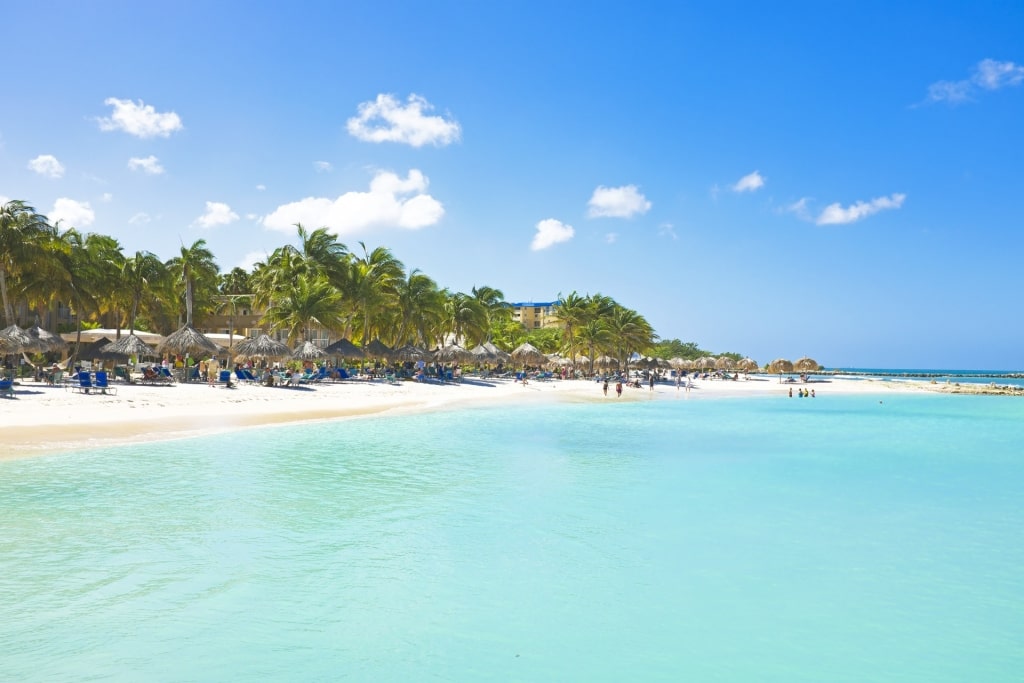
Palm Beach
Dazzling white sands, sun-kissed rocky bays, natural pools carved by Caribbean waves, and seemingly never-ending stretches of jade and turquoise ocean are undoubtedly the main highlights Aruba is known for.
Thanks to the special composition of Aruba’s sand, a fine-white mix of crushed shells and coral, the white sand beaches are not just sublime to look at, but maintain a comfortable temperature for lounging on throughout the day.
Buzzing Palm Beach, with its countless watersport rentals, beach-chic cafés, and shaded spots under the palms, is the best beach in Aruba to be at the heart of the action.
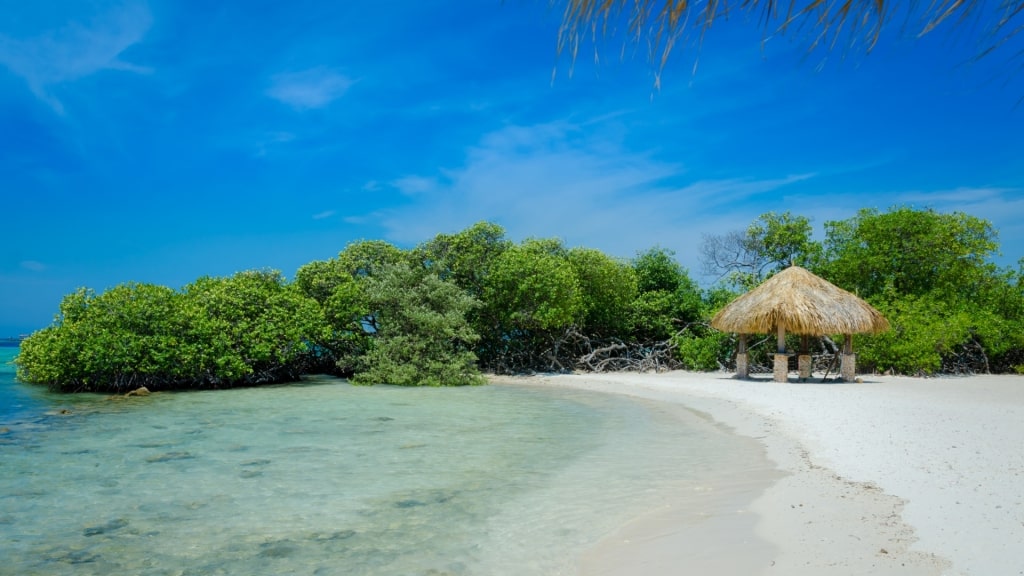
Mangel Halto
For a more secluded bathing experience, head a little further out to the serene bay of Boca Catalina, a dreamy setting for snorkeling in the crystal-clear waters, or secluded Mangel Halto, framed by mangroves.
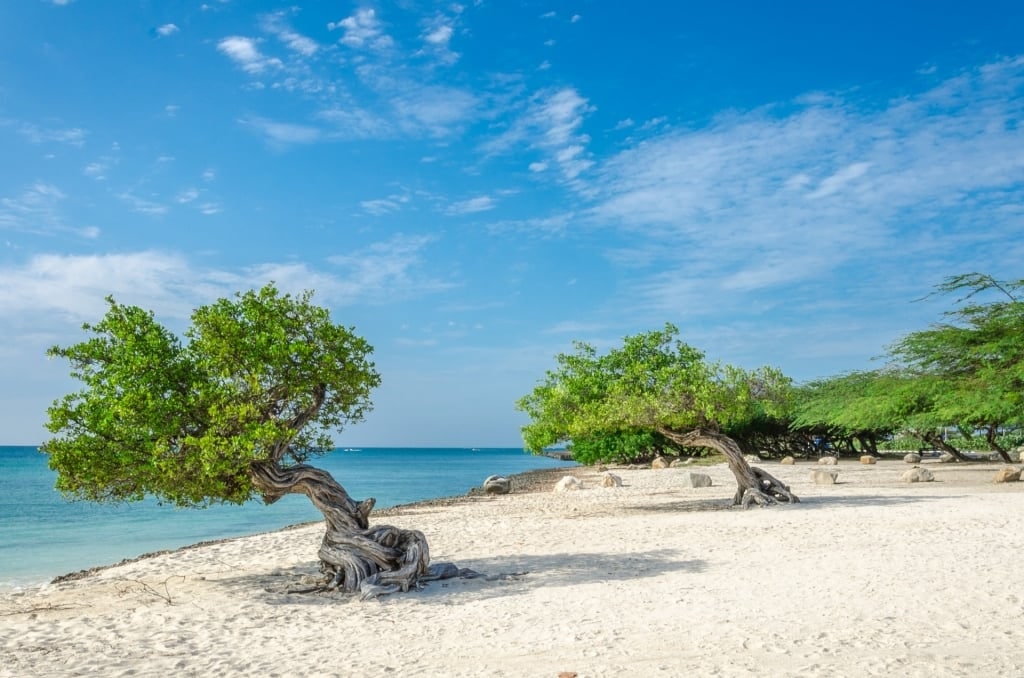
Eagle Beach
Arashi Beach, with relatively mild currents, or the pristine soft sands of award-winning Eagle Beach are other favorite spots to lay out a towel.
Read: Best Places to Visit in Aruba
Sunset Sailing Trips
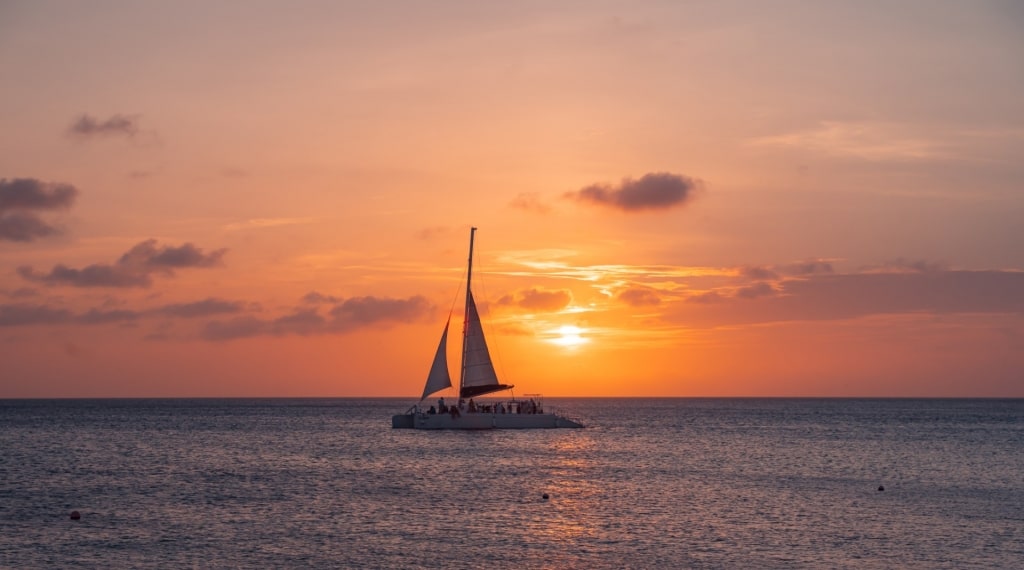
Sunset cruise in Aruba
While lounging on the pristine beaches is hard to beat, a catamaran cruise along the west coast, sipping on a local rum cocktail, provides the perfect chance to appreciate just how spectacular the shoreline is from the waters.
For something even more special, set sail and take in one of the best sunsets in the world, rum punches and snacks accompanied by the soundtrack of Caribbean steel drums as the setting sun streaks the western horizon with crimson and amber.
Read: Best Places to Go Sailing in the Caribbean
Thrilling Watersports
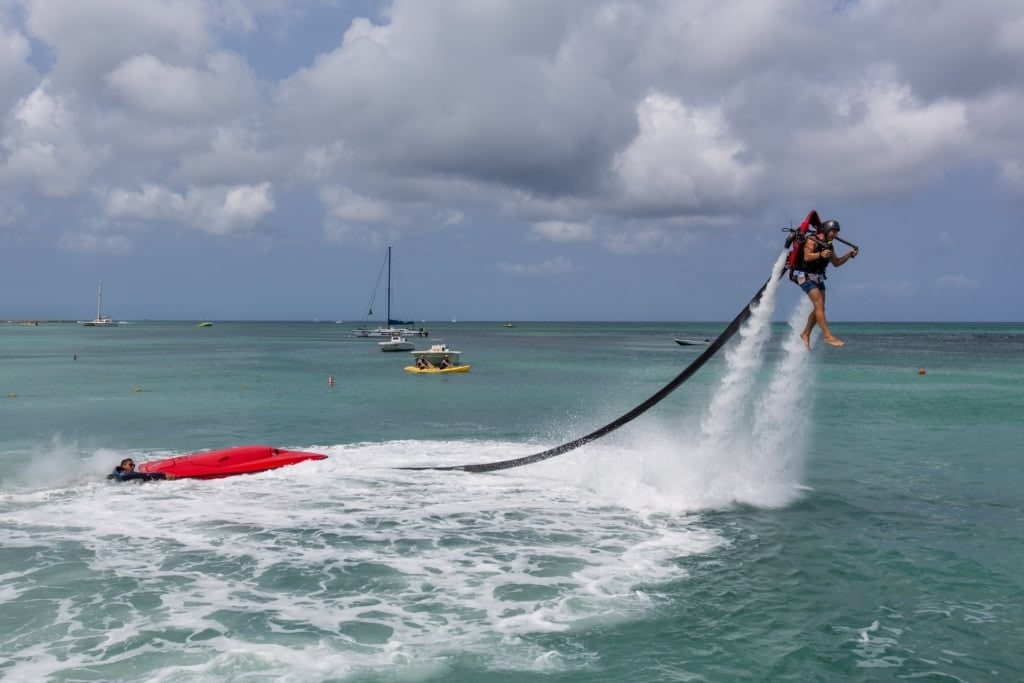
Watersports in Palm Beach
With over 40 miles of coastline, Aruba is a true aquatic playground. Add in the trade winds which ply the shore, and you have the ultimate setting for watersports, whether it’s windsurfing, kayaking, or speeding across the Caribbean Sea on a jet ski.
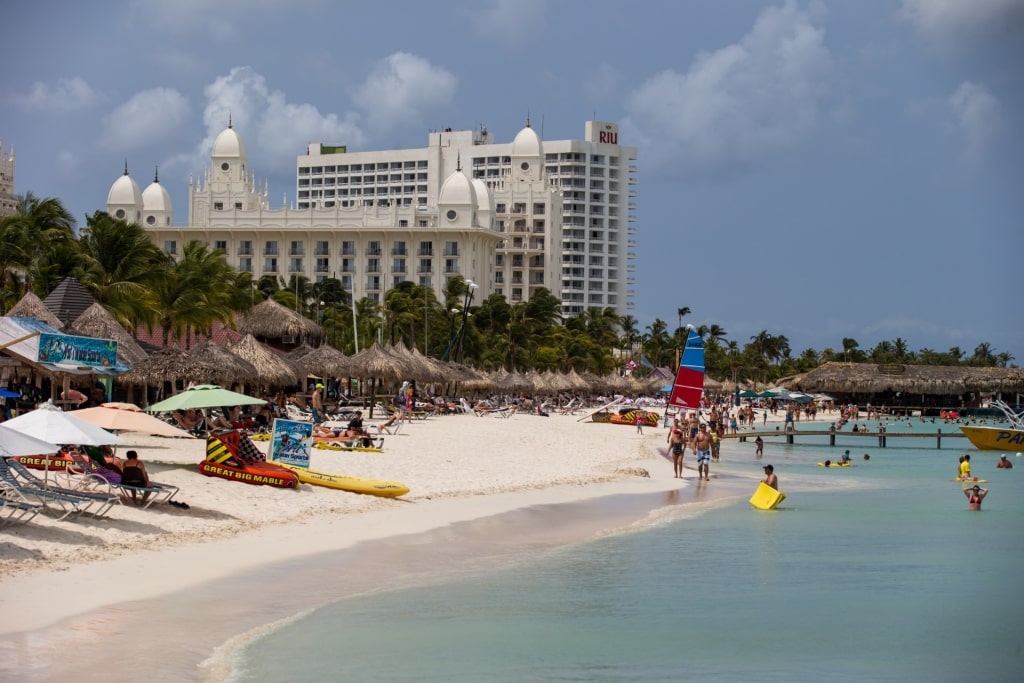
Palm Beach
From the majority of the main beaches, but particularly around Palm Beach, you’ll find rental shacks where kayaks, stand-up paddle boards, snorkel gear, and inflatables can be easily hired for a few hours. Just remember to pack reef-safe sunscreen as eco-conscious Aruba has banned reef-bleaching oxybenzone-based creams.
For the ultimate outdoor vacation, make the most of Aruba’s famed trade winds, which aren’t just great for keeping cool while topping up your tan. Due to the proximity to the equator, these cooling and sometimes stronger winds have defined the island’s landscape, with palms and divi-divi trees often bending and morphing in shape to follow the breezes.
If you’re a windsurfing or kitesurfing enthusiast, these winds, usually slightly stronger in the morning, create the perfect conditions to head out on the water and experience an adrenaline kick. After all, Aruba is one of the best islands for surfing in the Caribbean.
Arikok National Park
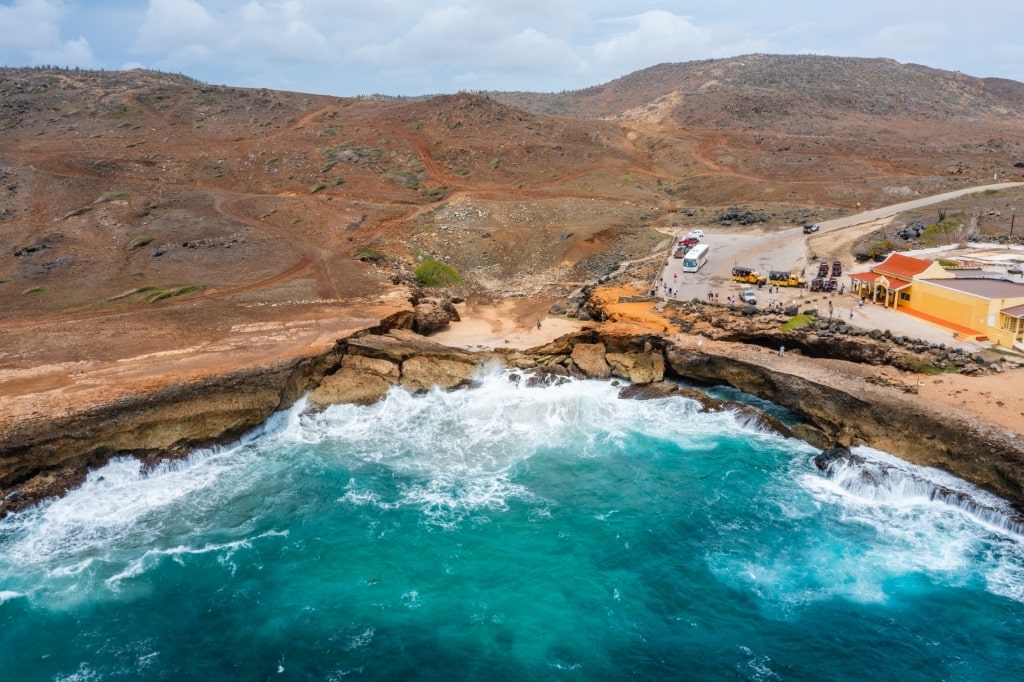
Arikok National Park
Covering around 20 percent of the island, Arikok National Park is, for many first-time visitors, a surprise change of landscape.
Visiting here is one of the best things to do in the Caribbean, with a combination of ancient caves, enormous rock formations, and relatively untouched (and untamed) beaches framed by dramatic scenery.
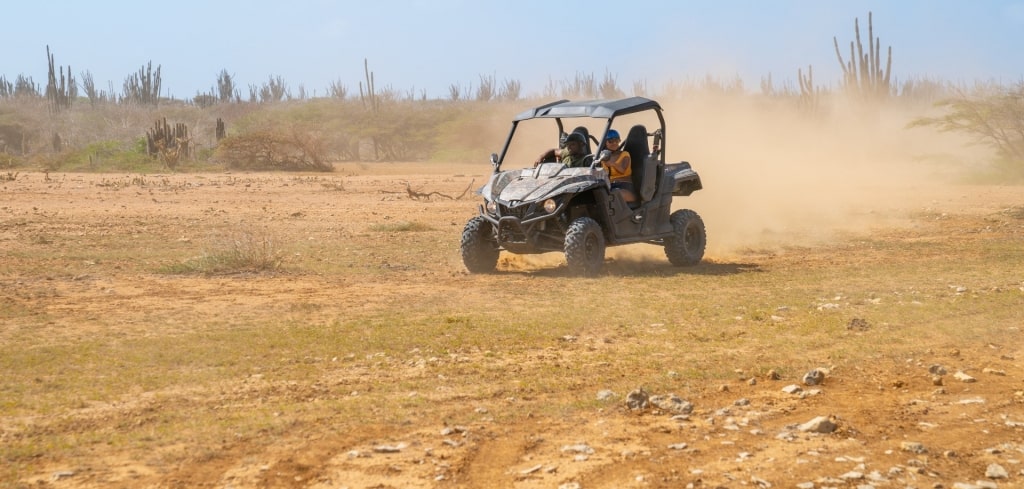
ATV in Arikok National Park
The best way to experience and explore the park is either on a robust UTV or a four-wheel drive. The rugged terrain, coated with cacti and shaped by rolling, arid landscapes spills out towards the ocean, where cerulean waters have pounded away at the coastline to create natural rock pools and bridges.
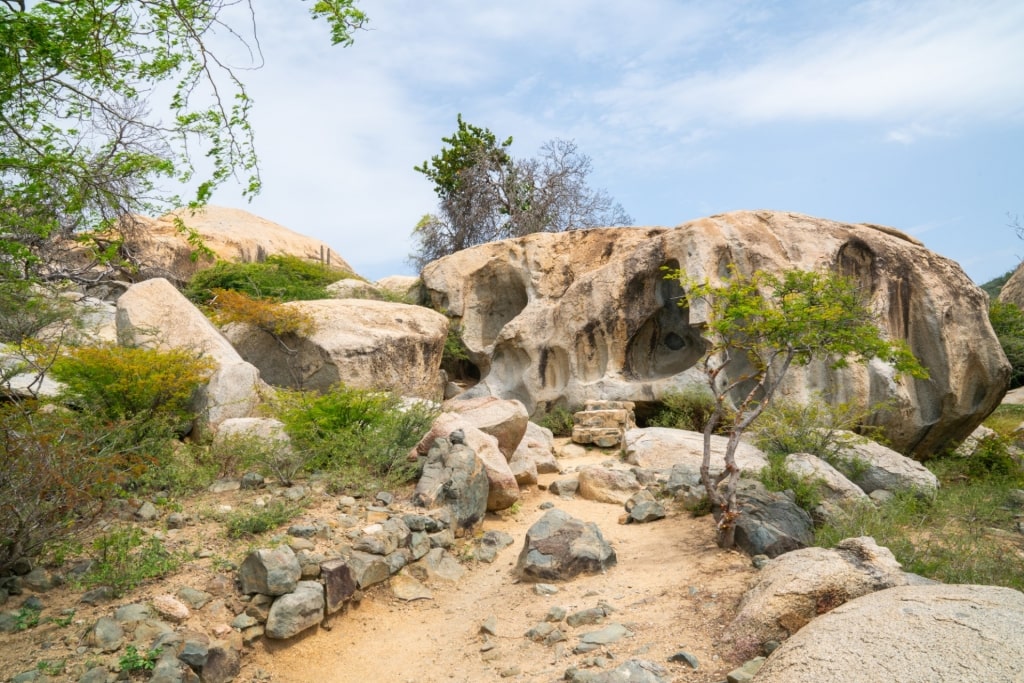
Ayo Rock Formations
Geological wonders, such as the giant boulders of the Ayo rock formations, will leave you in awe—a far cry from the relaxing beach scene on the other side of the island.
As you head inside the trio of public accessible caves, you’ll witness nature’s defining work of stalactites, rooftop “skylights”, or ancient drawings from the Arawak, believed to be around 2,500 years old.
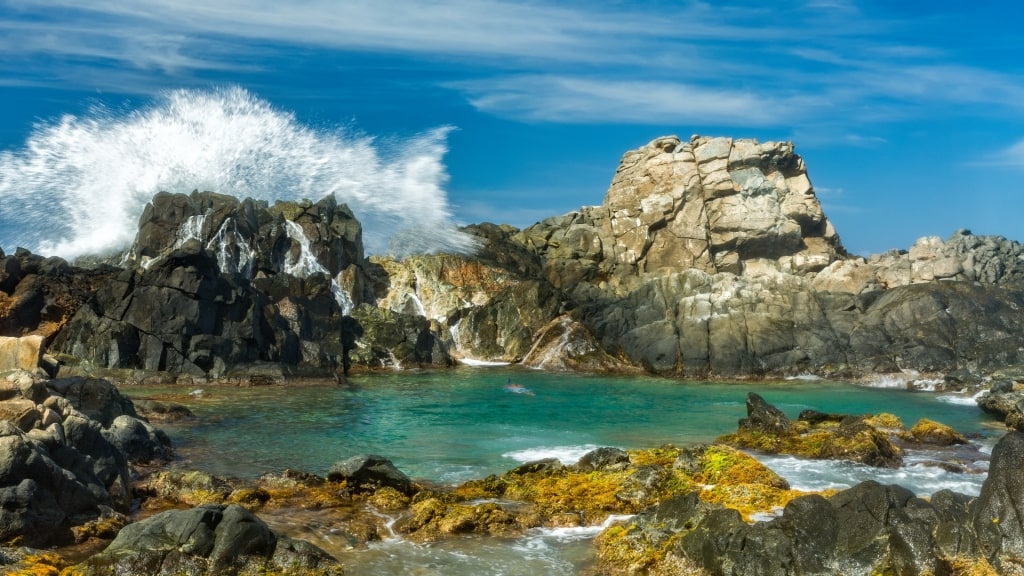
Conchi
While the waters are certainly more wild on this side of the island, the volcanic stone-carved natural pool of Conchi offers a bathing respite from the heat. The arrival at this dramatic spot is an adventure in itself.
Read: Romantic Places to Visit on an Aruba Honeymoon
Street Art
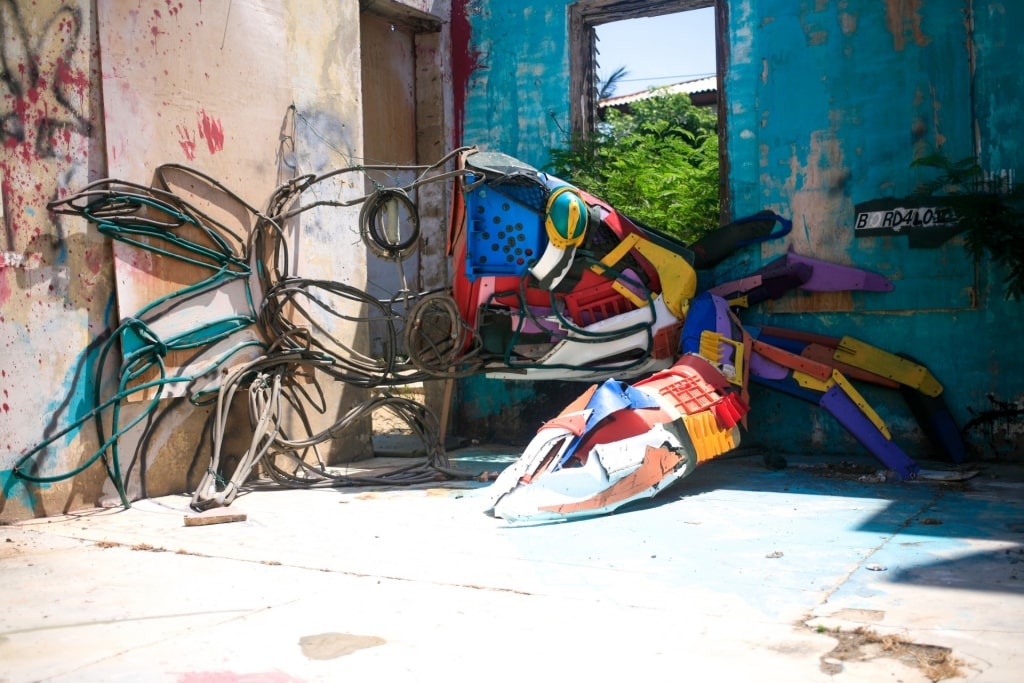
Street art in San Nicolas
Thanks to an ever-evolving creative scene, Aruba has become known for its street art. Nowhere is this more evident than in the southern city of San Nicolas.
Regarded as the island’s creative capital, and nicknamed the sunrise city, this neighborhood was once well off the beaten path for travelers. Following an injection of color and passion from local and international artists, however, the mural-adorned streets have firmly placed it on the map.
As you stroll the streets where previously dilapidated buildings have been given a new lease of spray-painted life, you’ll come across murals and art-works created by artists from as far away as Portugal. Occasional workshops allow you to pick up a can and leave your own mark on the walls of this constantly transforming city.
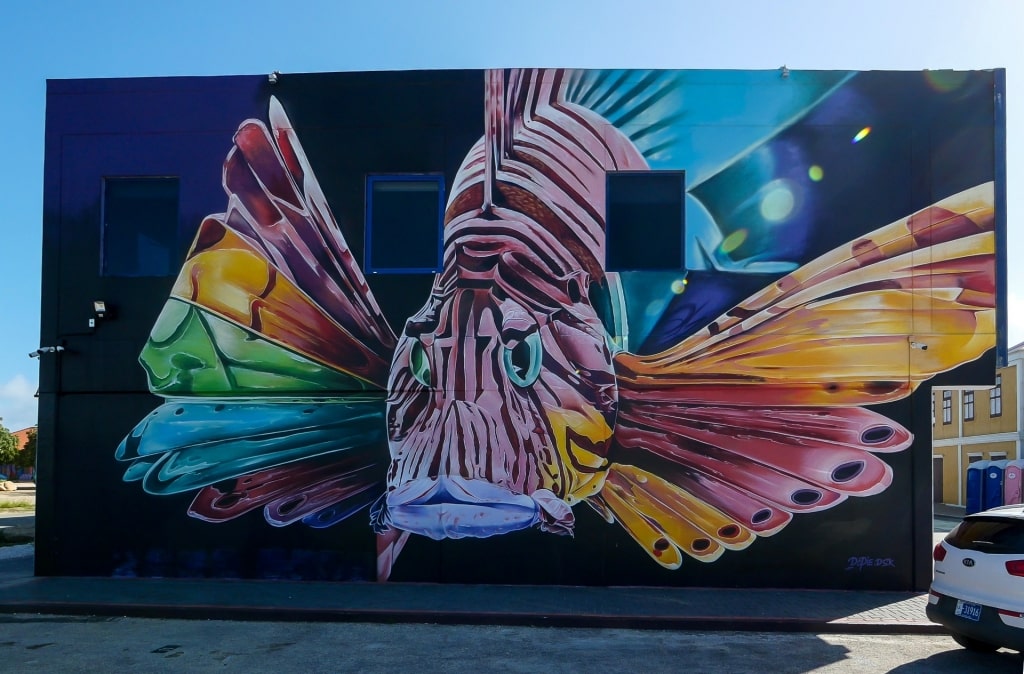
San Nicolas Photo by Jay Galvin on Flickr, licensed under CC BY 2.0
Beyond the giant pieces that have reshaped San Nicolas, a host of cultural centers and stores have blossomed. Browse local artisanal products in the craft and design space of Cosecha, learn more about Carnival costumes at the dedicated museum, or settle into the sunny patio of O’Neill’s for some delicious Caribbean cuisine.
Sumptuous Seafood
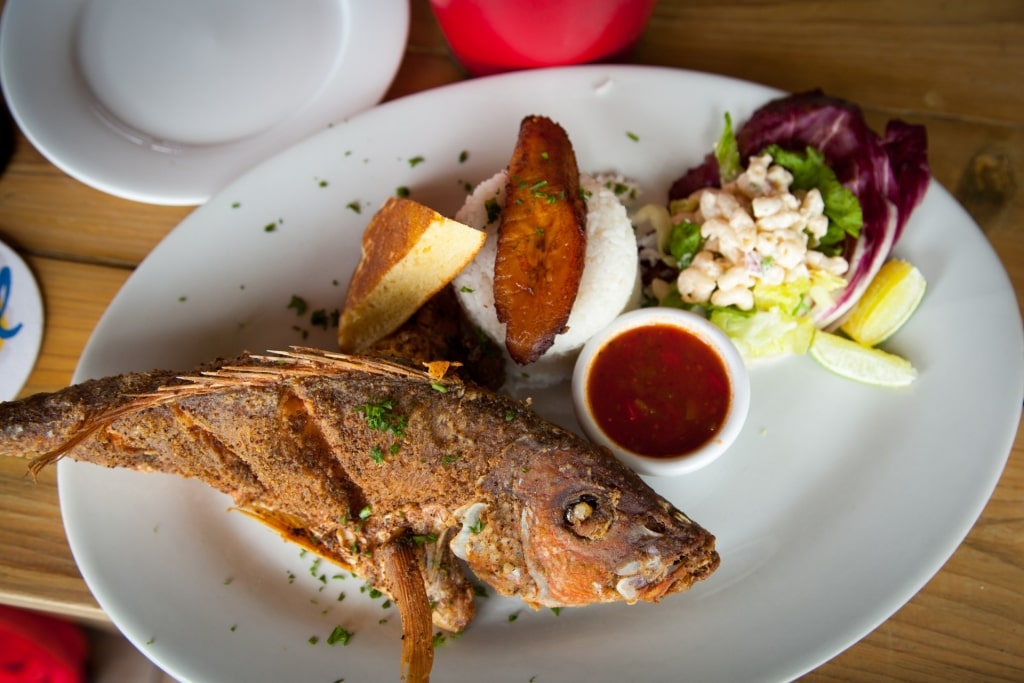
Snapper
A feast of seafood is featured on menus across Aruba, made even more delicious paired with the light ocean breeze and a front-line view of the sparkling coast.
You won’t have to stray far from the beach to sample perfectly cooked seafood, with mahi-mahi (dolphinfish) and snapper two of the most common Aruban dishes.
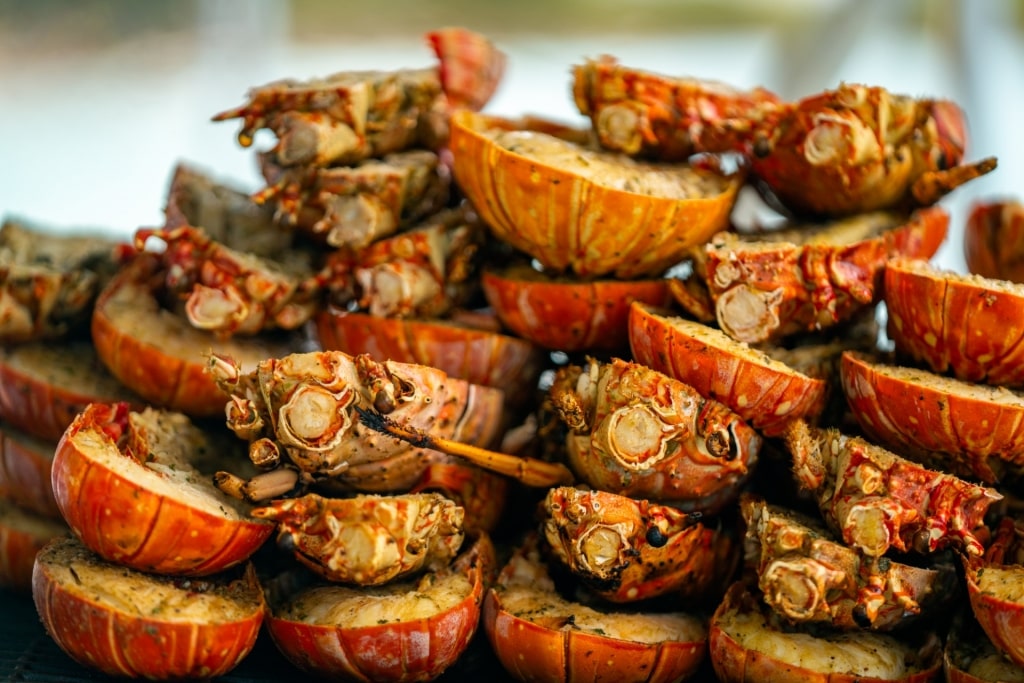
Caribbean lobster
Yellowfin tuna, large juicy shrimps, and Caribbean lobster are also standard on most menus. For a more local flavor, order your fish lightly pan-fried with a side of creole sauce, a delicious mix of herbs, tomatoes, peppers, and seasonings.
Island Cuisine

Cabrito stoba
While seafood is certainly king on the island, there are plenty of other dishes that Aruba is known for, often taking inspiration from nearby cultures and Dutch cuisine.
Sample cabrito stoba, a hearty goat stew with a tomato base, pan bati, an almost pancake-like sweet flatbread, or keshi yena, a Dutch-style cheese ball with spiced meat.
Cala, made from black-eyed peas and crispy caramelized fried plantain makes for a great snack or side. The local papaya hot sauce provides a tangy accompaniment to any meal.
Healing Aloe
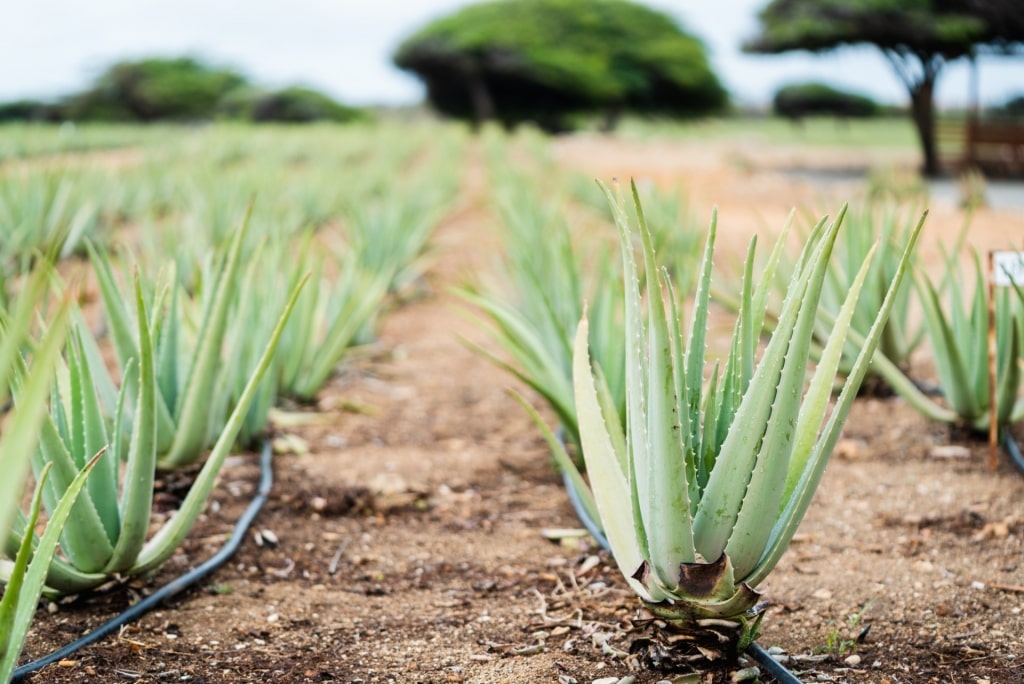
Aruba Aloe
Aruba is known across the world for its excellent aloe, thanks to Aruba Aloe’s focus on growing the spiky shrub, harvesting, and producing its beauty, skin, and sun care products in-house.
Since 1890, the company has been an integral part of the island’s culture and is one of the oldest and largest commercial operations globally.
While you’ll find the premium products in most of the island’s boutiques, visiting the factory is one of the best things to do in Aruba. Set in the island’s arid interior, it makes for a much better place to pick up this natural souvenir.
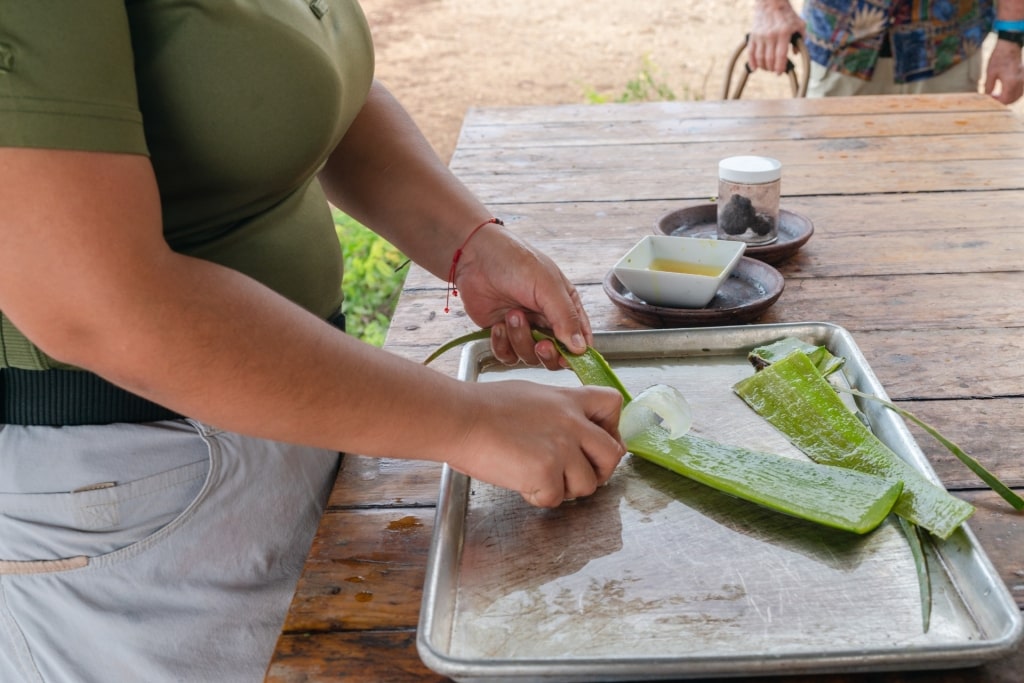
Aruba Aloe
During a tour of the plantation, museum, and factory, you’ll learn all about the cultivation process and how the hand-cut leaves are quickly processed to retain the powerful nutrients before having the chance to buy a cream or gel directly from the source.
Read: Where to Go Shopping in Aruba
The Underwater World
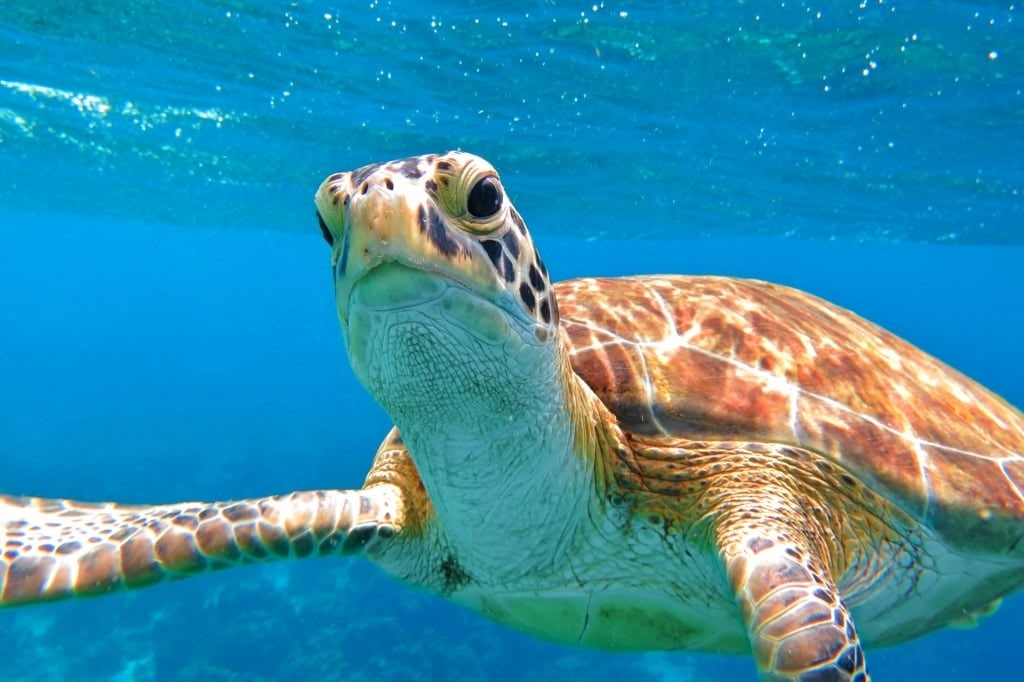
Sea turtle
Fringed by coral gardens and reefs in the warm and welcoming Caribbean Sea, Aruba is known for its excellent snorkeling and scuba diving opportunities. Colorful schools of fish, hammerhead sharks, stingrays, giant tunas, and turtles can all be spotted on an aquatic adventure.
Witnessing this breathtaking array of marine life is as simple as donning a mask and fins and heading into the waters from some of the best-known beaches. Turtles are an especially attractive draw here and can be spotted off the shores of popular Arashi, serene Mangel Halto, and shallow Baby Beach.
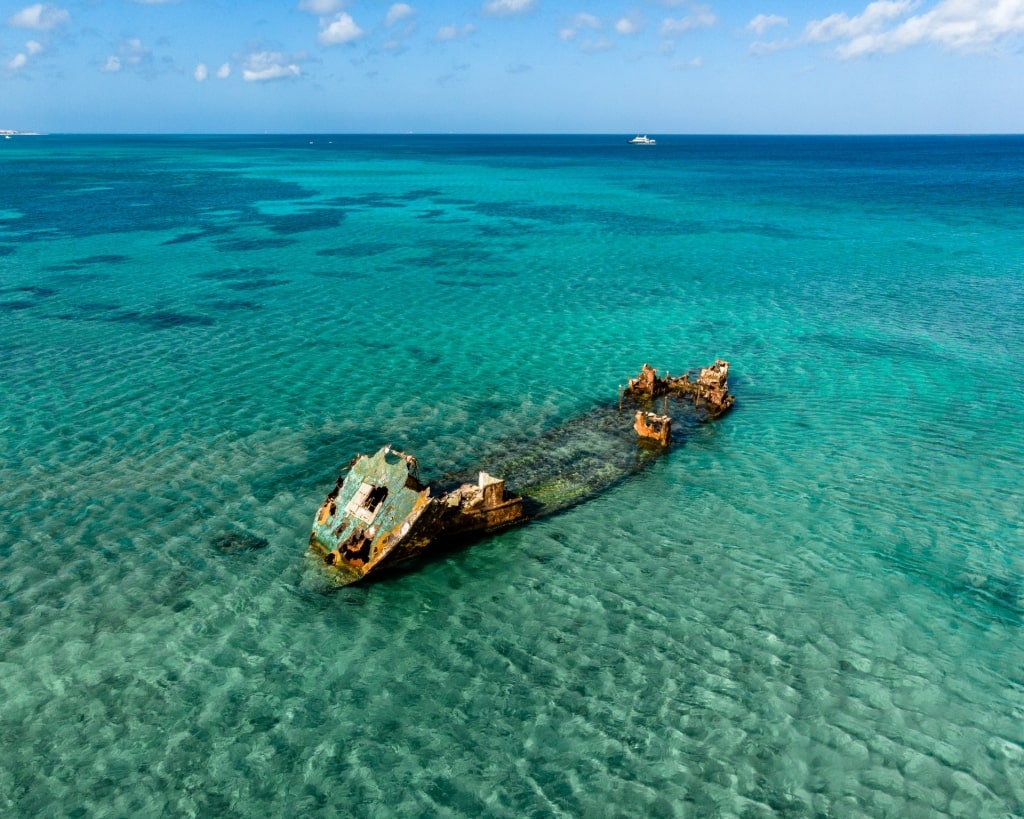
Malmok Bay
Head to the sandy cove of Malmok Bay, one of the best places to snorkel in Aruba, to spot a diverse range of species, with crystal-clear waters and excellent conditions.
Scuba divers are equally spoiled, especially those with a penchant for wreck diving. Aruba has seen its fair share of colonization, conquerors, and trade routes over the years, so it’s no surprise that shipwrecks have become a common sight across the Caribbean Sea.
Two of the most recognized scuba diving spots in the Caribbean, the SS Antilla cargo ship and World War II SS Pedernales, make for a fantastic artificial reef exploration experience.
Read: Best Places to Scuba Dive in Aruba
Carnival

Carnival
One of the most electric times of year to visit the island is during the colorful and exhilarating carnival season, a grand event that Aruba is known for throughout the Caribbean. While the pre-festivities and warm-up events begin in November, the best time to visit Aruba for the bulk of the celebrations is January and February.
Colorful and animated parades of floats and dancers in sparkling outfits and feather-adorned headdresses take over the streets as the rhythm of steel bands floats through the air.
From the highly decorated costumes, which can take months to craft, to the torchlight processions and joyful spirit, this is when Aruba shines its brightest.
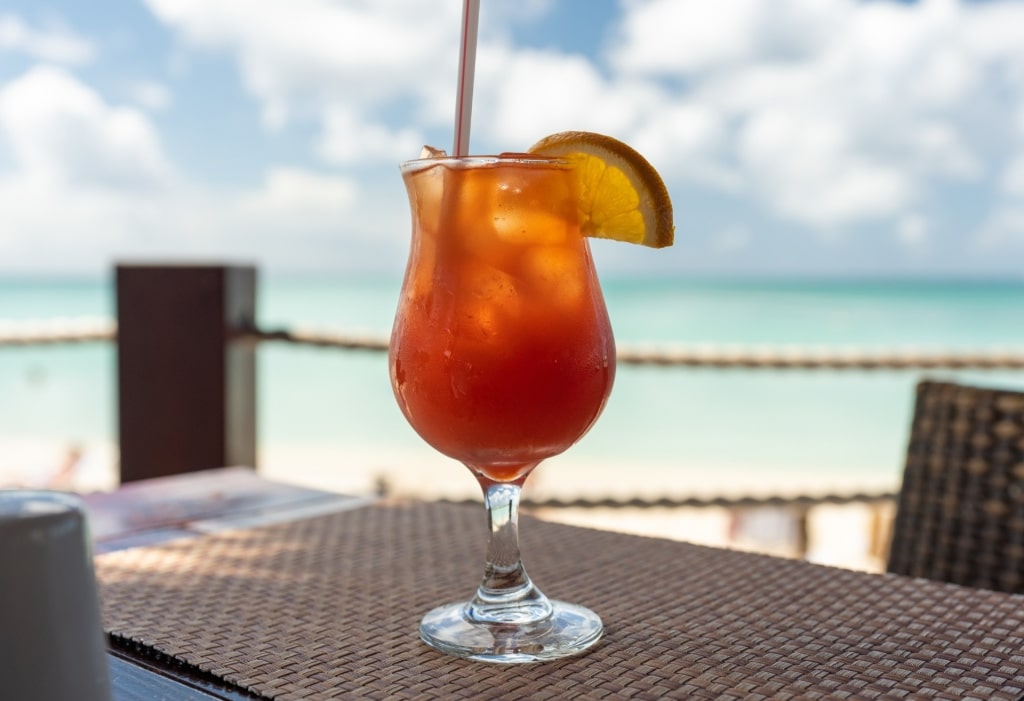
Aruba Ariba
While it’s always a good time to sample an Aruba Ariba, a fruity vodka and rum-based Caribbean cocktail featuring the local Coecoei liquor (derived from agave), it comes with a little extra punch during Carnival time.
If you miss the main carnival season, you can still taste a sample of the festivities at the mini Bon Bini Festival at Fort Zoutman on Tuesdays, or at special smaller-scale events put on throughout the year in San Nicolas.
Dutch Colonial Architecture
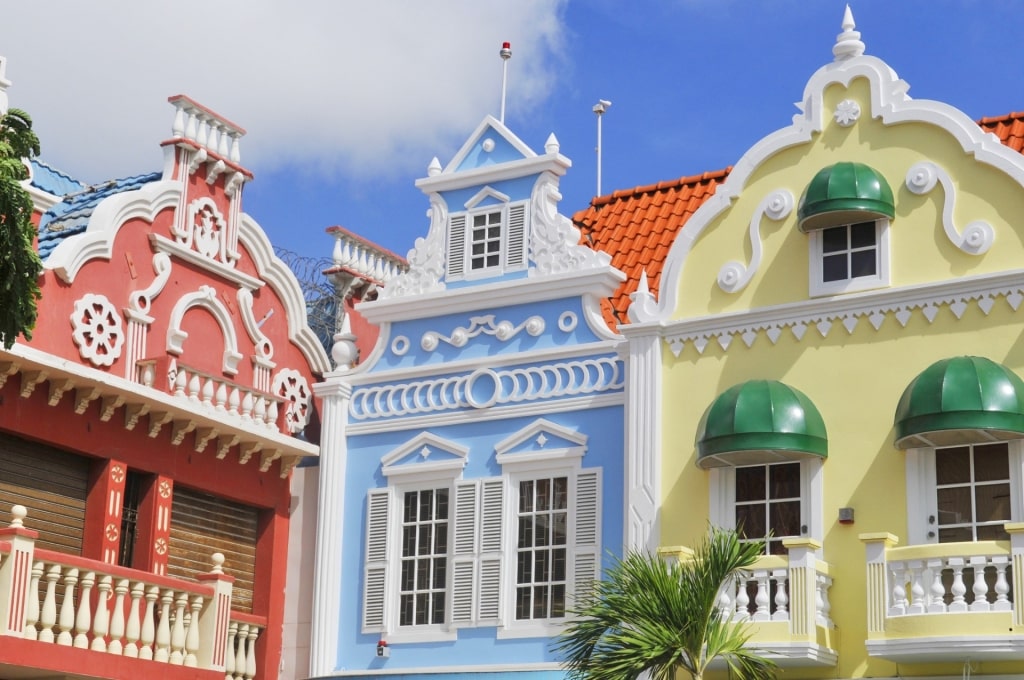
Oranjestad
Aruba became part of the Netherlands Antilles in 1845, and later, in 1986, an autonomous country in the Kingdom of the Netherlands. However, the Dutch first colonized the island in 1636, before a brief British period of occupation during the Napoleonic Wars.
The Fort Zoutman Museum, the oldest colonial-era building on the island, is a good starting point for learning more about the island’s history.
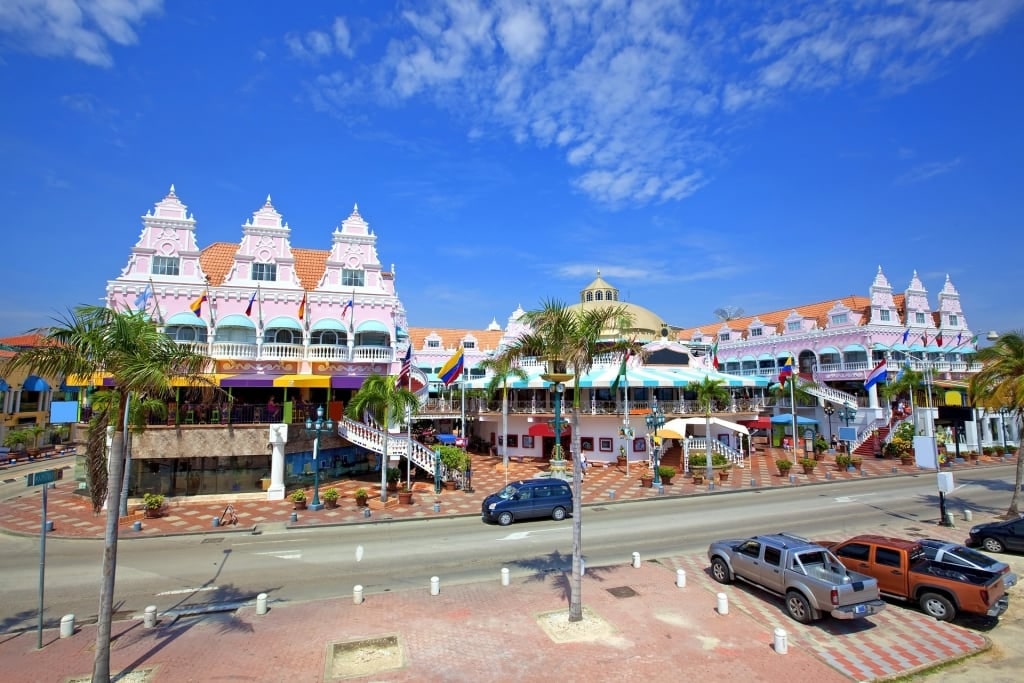
Oranjestad
As you wander the streets of the capital, Oranjestad, you’ll quickly spot why Aruba is known for its Dutch colonial architecture. Ornate, pastel-hued buildings in pinks, blues, and yellows, with gambrel roofs and detailed balconies decorate the downtown area.
If it wasn’t for the trade winds and tropical temperatures, you could almost forget you are in the Caribbean and not Holland.
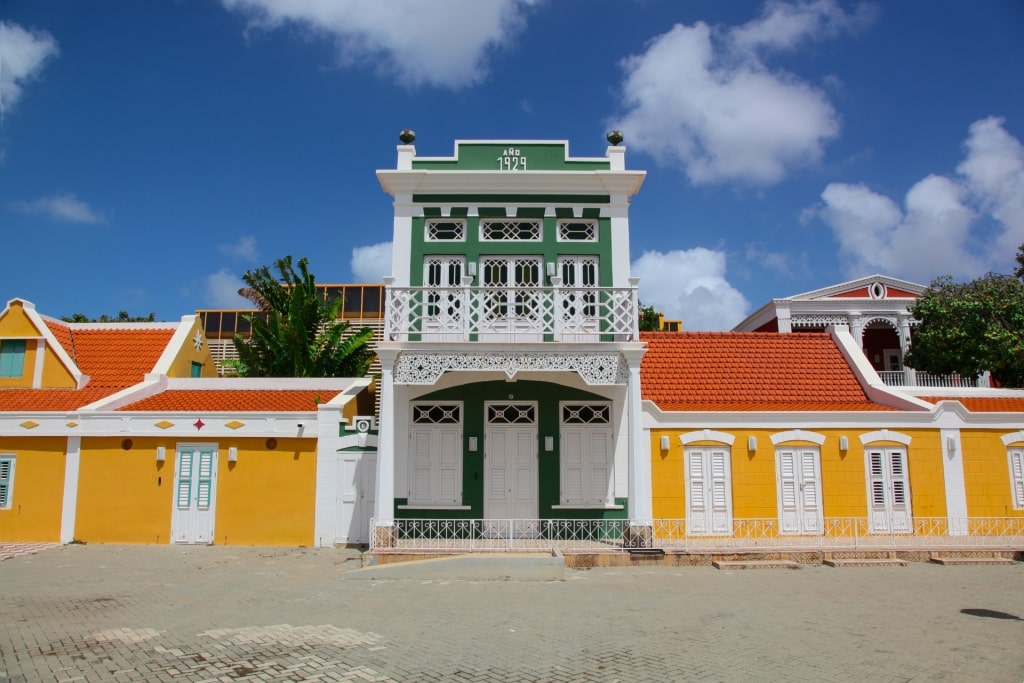
Ecury Complex, Oranjestad
Of particular architectural interest is the Ecury Complex, an old export house reimagined as a museum, the houses-turned-shops around Plaza Daniel Leo, and the garishly-pink Royal Plaza Mall.
Sunshine & Smiles
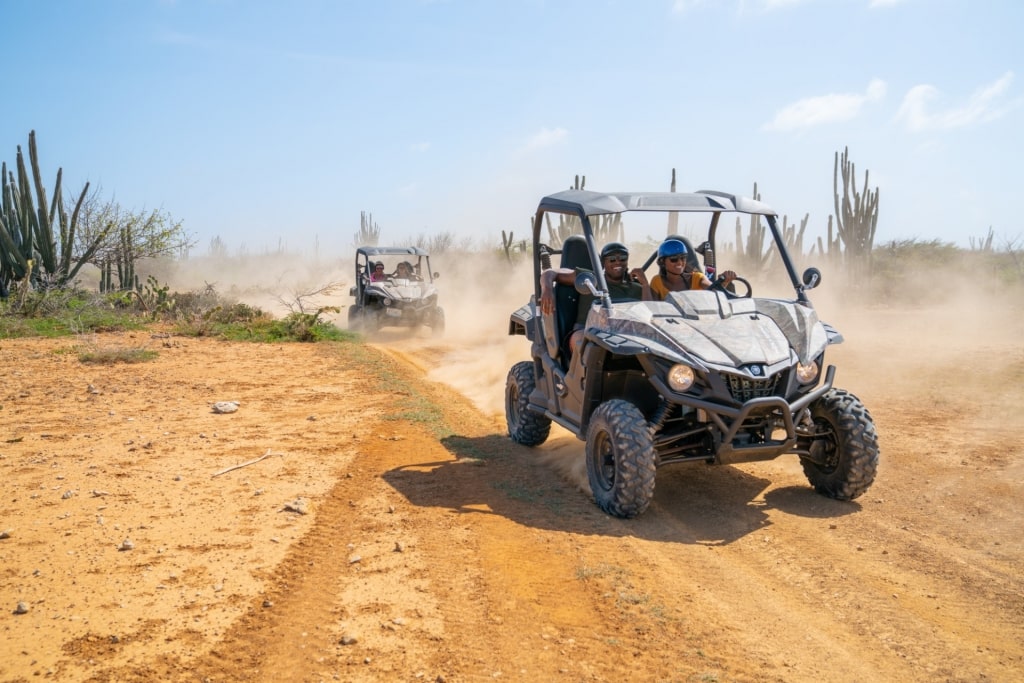
Arikok National Park
Aruba is nicknamed the “One Happy Island” by both locals and travelers, and the smiles you’ll encounter, whether at a beach bar or the craft markets, are nothing short of contagious. It’s fair to say this isn’t just a marketing tagline, but that grinning faces are genuine memories for everyone who has had the pleasure to visit.
Aruba is known for being one of the sunniest countries in the Caribbean; even during the shortest days of the year, in December, you’ll usually experience around 11 hours of sunshine. Combine this with those warm smiles and the passion for life, and the island truly is an escape of pure joy.
Read: Best Things to Do in Aruba with Kids
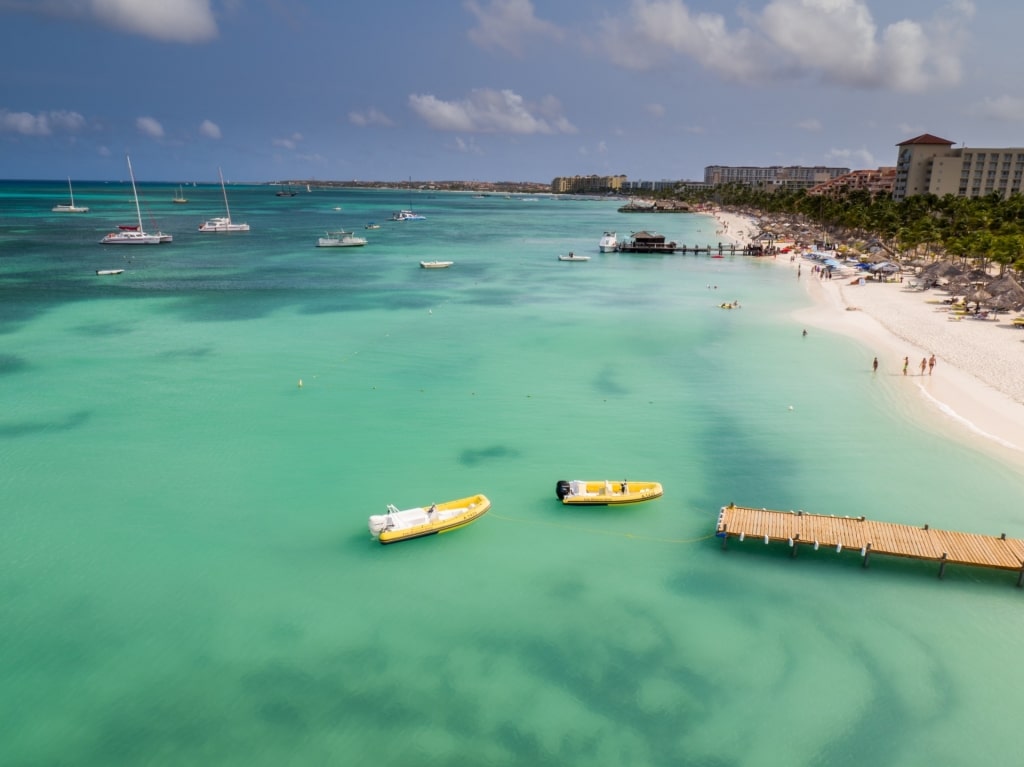
Aruba
Ready to experience everything that Aruba is known for? Browse Celebrity’s Aruba cruises today to start planning your next dream Caribbean vacation.
